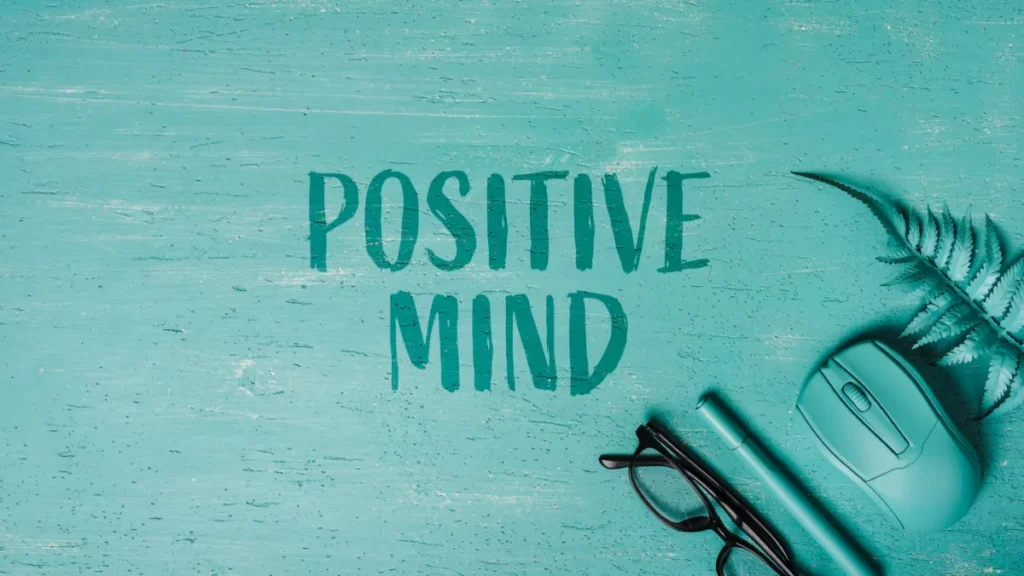The Personal Development Blog

How to Cultivate a Positive Mindset Daily
The Power of a Positive Mindset
We all face daily stressors, challenges, and unexpected disruptions—some small, some life-changing. However, the way we respond to them can define our overall emotional well-being. While we can’t always control what happens, we can control our mindset.
A positive mindset doesn’t mean ignoring reality or pretending everything is perfect. It’s about approaching life’s ups and downs with resilience, hope, and a growth-oriented attitude. More than just a feel-good buzzword, positivity is a powerful psychological tool backed by science.
Research shows that a positive mindset boosts mental and physical health. It also strengthens relationships and enhances problem-solving skills. Dr. Barbara Fredrickson, a top researcher in positive psychology, says positivity helps us see more options. It also strengthens our ability to handle tough times as we grow.
In this blog post, you’ll learn what positive thinking is. You’ll also explore daily practices backed by evidence. Plus, you’ll see how a consistent mindset shift can change your life from within. If you’re dealing with negativity, wanting a fresh start, or hoping to feel more empowered, this guide will help you add lasting positivity to your daily routine.
What Does It Mean to Cultivate a Positive Mindset?
The Difference Between Toxic Positivity and Healthy Optimism
Let’s clear up a common misconception: positive thinking isn’t about suppressing negative emotions or living in denial. That kind of forced cheerfulness—known as toxic positivity—can actually be damaging.
Healthy optimism, on the other hand, means acknowledging challenges while choosing to focus on what can be learned or gained. It’s about believing in the possibility of growth, even when times are tough.
Why Positivity Matters for Emotional Well-being

When practised intentionally, a positive mindset contributes to:
- Lower stress levels and reduced cortisol
- Increased emotional resilience and coping capacity
- Higher self-esteem and confidence
- Better decision-making and clearer thinking under pressure
Research in the Journal of Positive Psychology shows that people who reflect positively every day feel more satisfied with life and have better well-being over time.
Daily Habits to Develop Positive Thinking

1. Start Your Day with Intention
How you begin your morning sets the tone for your entire day. Creating a mindful, positive morning routine doesn’t need to be elaborate—it just needs to be intentional.
Try:
- Saying affirmations aloud: e.g., “I’m capable of handling whatever today brings.”
- Journalling 3 things you’re looking forward to
- Reading or listening to something uplifting
Even five minutes of positive intention can shift your mental state from reactive to proactive.
2. Practise Gratitude
Gratitude is one of the most effective ways to rewire the brain for positivity. Regularly recognising the good in your life—no matter how small—creates a sense of abundance.
Daily gratitude practices include:
- Keeping a gratitude journal
- Sending a thank-you message to someone
- Reflecting before bed on what went well that day
A 2017 study in Psychological Science found that gratitude boosts dopamine and serotonin. This helps improve mood and supports long-term mental health.
3. Manage Your Inner Dialogue
We all have an inner voice that narrates our experience. For many people, that voice leans critical or fearful. Learning to recognise and reshape negative self-talk is crucial.
Steps to shift inner dialogue:
- Catch yourself in the act (“That was stupid of me”)
- Pause and reframe (“I made a mistake, but I’m learning”)
- Repeat the positive alternative
This isn’t about lying to yourself—it’s about being kinder, more constructive, and more growth-oriented.
4. Consume Uplifting Content
What we read, watch, and listen to profoundly affects our mindset. If your newsfeed or entertainment leaves you feeling drained or fearful, it may be time to curate your content diet.
Try substituting in:
- Podcasts focused on resilience and self-growth
- Books that inspire, challenge, or uplift
- Social media accounts that promote positivity and authenticity
Guarding your mental space is essential for positive mindset cultivation.
5. Surround Yourself with Positive Influences
The people we spend time with shape our energy and outlook. While we can’t always choose our colleagues or family members, we can choose how much access people have to our emotional space.
Seek out those who:
- Encourage growth and celebrate wins
- Offer constructive support during hard times
- Share their own positive mindset practices
Healthy relationships support your efforts. They create a space for positive daily habits.
The Psychology Behind Positivity
The Brain’s Negativity Bias
Humans are naturally wired to scan for threats—an evolutionary survival mechanism. “Negativity bias” means we tend to focus more on criticism, stress, and mistakes than on positive feedback or successes.
The good news? The brain is neuroplastic. We can train it to focus on the positive through consistent practice.
The Role of Positive Emotions in Growth
Dr. Fredrickson’s broaden-and-build theory says positive emotions help us “broaden” our awareness. They also build emotional resources like resilience, creativity, and problem-solving. Over time, this contributes to lasting well-being and personal development.
Mindfulness and Present Moment Awareness
Why Mindfulness Matters
Mindfulness—the practice of paying attention to the present moment—can break cycles of negative thinking. When we’re truly present, we’re less likely to ruminate about the past or catastrophise the future.
Mindfulness techniques that promote positivity:
- Breath-focused meditation
- Body scans
- Noticing small moments of beauty or joy
Practising mindfulness for just 10 minutes daily can boost focus, help regulate emotions, and increase positivity.
Anchoring Positivity in the Present
Instead of waiting for a future goal or event to “make us happy,” daily mindfulness helps us find satisfaction now. This helps cultivate contentment and motivation simultaneously.
Resilience Through a Positive Mindset
Positivity Doesn’t Eliminate Pain—It Builds Strength
A positive mindset doesn’t protect us from life’s difficulties, but it does change how we experience them. Optimism creates emotional flexibility, allowing us to bounce back instead of breaking down.
Mayo Clinic research finds that optimists have a lower risk of heart disease, less depression, and live longer.
Real-Life Example: Emma’s Story
Emma, a freelance graphic designer, faced a string of client cancellations during the pandemic. She chose not to give in to despair. Instead, she began a daily habit. Each day, she listed three small wins. These could be anything, like creating a new portfolio piece or sending a pitch email. This simple shift kept her focused and resilient and ultimately led to her landing her biggest client to date.
Incorporating Positivity Into Challenges
Reframing Setbacks
Every failure contains a seed of learning. Reframing means looking for that lesson instead of focusing solely on what went wrong.
Instead of saying, “I failed,” try:
- “What did this experience teach me?”
- “What could I do differently next time?”
This empowers you to stay proactive rather than paralysed.
Celebrating Progress, Not Perfection
Positivity grows when we recognise how far we’ve come—not just how far we have to go. Celebrate small milestones. Acknowledge effort, not just outcomes.
Examples:
- Finishing a tough workout, even if you struggled
- Speaking up in a meeting, even if your voice shook
This builds confidence and keeps the momentum alive.
Integrating Positive Mindset Practices into Your Lifestyle
Design a “Positivity Ritual”
Choose a few simple actions you can do daily. Keep it manageable and meaningful.
Your ritual might include:
- 5-minute gratitude journaling
- Morning affirmations
- Reading a positive quote
Put it somewhere visible and treat it like brushing your teeth—non-negotiable and foundational.
Create a “Positivity Toolkit”
Have tools ready for tough days. Your toolkit could include:
- A playlist of songs that lift your mood
- Screenshots of affirmations or texts from loved ones
- A list of go-to self-care actions
Preparation helps you respond rather than react when negativity creeps in.
Positivity as a Daily Choice
Cultivating a positive mindset isn’t about being endlessly cheerful or pretending life is perfect. It’s about consciously choosing to focus on growth, gratitude, and possibility—especially when it’s hardest to do so.
Practising daily positivity, managing your thoughts, and being around uplifting people can boost your emotional health. You’re also creating a better life for yourself.
To recap:
- A positive mindset is rooted in awareness, gratitude, and resilience
- Daily habits like journalling, affirmations, and mindfulness strengthen positive thinking
- Positivity supports long-term emotional and physical health
Begin today. Choose one positivity practice—just one—and commit to doing it daily for the next week. Watch how your mindset begins to shift. Positive thinking is a practice, not a personality trait. The more you nurture it, the more it will grow.









